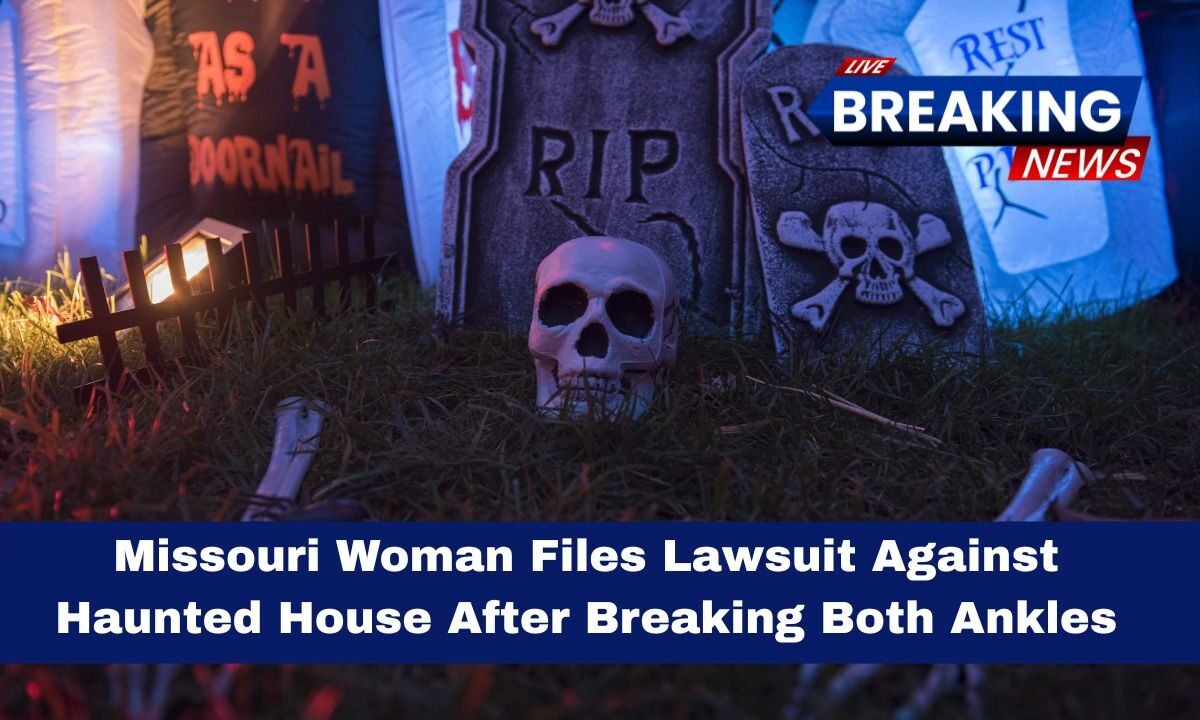A Nebraska visitor has filed a negligence lawsuit against the operators of The Beast Haunted House in Kansas City, Missouri, claiming a second-story “Beast Jump” left her with two broken ankles, surgery, and months of therapy.
The suit names Full Moon Productions, which owns The Beast and other West Bottoms attractions, and seeks more than $75,000 in damages.
The company disputes the allegations, pointing to guest instructions and a signed liability waiver, and says the jump feature has since been discontinued.
What the Lawsuit Alleges
Plaintiff Leslie Blake says she visited The Beast on October 30, 2021, where staff directed guests to step out of a mock window and land on a large inflatable.
Blake contends the pad was under-inflated and mispositioned, causing multiple fractures in both ankles upon impact.
She underwent surgery and extensive rehabilitation and now claims the attraction failed to supervise the activity, maintain equipment, and warn patrons adequately about risks.
The Defense Position
Full Moon Productions has publicly maintained that guests were instructed to land “bottom first” rather than feet-first and that participants signed a waiver of liability acknowledging inherent risks associated with the haunted-house experience.
The company says Blake failed to follow instructions and indicates it expects the case to be dismissed—just as a prior 2023 case involving her injury was dismissed.
The operator further notes the “Beast Jump” is no longer offered at the attraction.
Why This Case Matters
Thrill attractions routinely rely on assumption-of-risk waivers and posted warnings.
But waivers don’t automatically defeat a negligence claim.
Courts often examine whether the venue used reasonable care—including proper equipment maintenance, staff training, and clear, enforced instructions—especially when a feature involves high-impact landings.
The case may also influence how other haunted venues approach elevated jumps, slides, or stunt-style features that blend spectacle with physical participation.
At-a-Glance Case
| Item | Details |
|---|---|
| Plaintiff | Leslie Blake (Lincoln, Nebraska) |
| Defendant | Full Moon Productions, Inc. |
| Venue | The Beast Haunted House, Kansas City, Missouri (West Bottoms) |
| Alleged Hazard | “Beast Jump” (second-story step/jump to inflatable landing pad) |
| Date of Incident | October 30, 2021 |
| Injuries Reported | Both ankles broken, surgical repair, extensive therapy |
| Legal Claim | Negligence/Recklessness in equipment, supervision, warnings |
| Damages Sought | $75,000+ |
| Operator’s Response | Guest signed waiver, failed to follow instructions; prior suit dismissed |
| Current Status of Feature | “Beast Jump” discontinued |
Safety & Operations Context
Haunted attractions can safely deliver thrills, but procedural rigor is crucial.
Best practices include: (1) documented pre-opening checks for inflatables and fall-arrest surfaces; (2) clear verbal and visual instructions with active staff enforcement; (3) controlled throughput to prevent crowding and rushed jumps; and (4) incident logging with prompt engineering review.
Where elevated jumps are involved, operators often add redundant controls—like spotters, landing-posture demonstrations, and pressure/height gauges for inflatables—to minimize landing-force injuries.
Potential Legal Questions Ahead
- Scope of waiver vs. negligence: Did the waiver clearly cover the specific risks of the activity, and were the risks properly managed?
- Instruction compliance: Were instructions timely and enforced, and would compliance likely have prevented the injury?
- Equipment condition: Was the inflatable maintained and inflated to manufacturer specifications and positioned correctly for the drop height?
- Prior incidents: Do any previous injuries or complaints suggest the operator knew or should have known about a hazardous condition?
The claim that a haunted-house jump left a guest with two broken ankles spotlights the fine line between thrill and foreseeable hazard.
As the case unfolds, expect close scrutiny of waiver language, staff instructions, and equipment logs.
Regardless of the outcome, the dispute is a reminder to operators to double-down on safety controls—and to guests to follow landing instructions and understand the real-world forces behind a spooky stunt.




